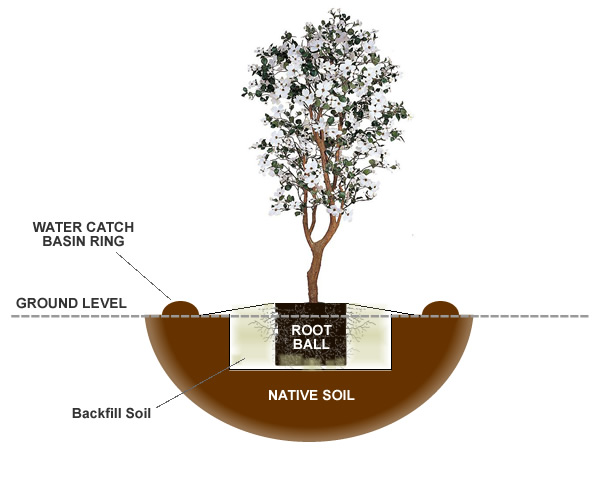Whispering secrets, sharing its vibrant blooms, and swaying gently in the breeze, the dogwood tree has long held a special place in our hearts and landscapes. But alas, there comes a time when circumstances call for us to uproot rather than nurture these beloved arboreal companions. Whether you’re embarking on an ambitious garden redesign or simply wish to relocate your dogwood to a more fitting abode, fear not! We have unraveled the enigmatic art of digging up a dogwood tree, making the formidable task ahead seem as effortless as a daisy’s pirouette in a summer’s meadow. So tie your gardening apron tight, grab your tools, and prepare to discover the secrets hidden beneath the dogwood’s labyrinthine roots.
Choosing the Right Timing for Digging Up a Dogwood Tree
When it comes to digging up a dogwood tree, timing is crucial. The process of transplanting this beautiful species requires careful planning and consideration. Whether you are relocating your dogwood tree or rescuing one from an undesirable location, there are a few key factors to keep in mind.
Factors to Consider:
| Feature/Tips | Description |
|---|---|
| Seasonal Timing | It is best to dig up a dogwood tree during its dormant season, typically in late winter or early spring before new growth starts. This minimizes the stress on the tree and increases its chances of a successful transplant. |
| Weather Conditions | Avoid transplanting the tree during extreme weather conditions such as high heat or freezing temperatures. Opt for a cool, overcast day with light rainfall for optimal results. |
| Tree Age | The age of the tree plays a significant role in successful transplantation. Younger dogwood trees, typically less than five years old, tend to adapt better to the process. However, older trees can still be successfully transplanted with proper care. |
By carefully considering these factors and following the appropriate steps for digging up a dogwood tree, you can increase the chances of a successful transplant. Remember to provide the necessary care and attention to your transplanted tree, ensuring it thrives in its new location.

Essential Tools and Equipment for Successful Tree Transplantation
To successfully dig up a dogwood tree, you’ll need the right tools and equipment. These essential items will ensure a smooth and successful transplant, allowing your dogwood tree to thrive in its new location. Here are the must-have tools and equipment for a successful dogwood tree transplantation:
-
<
strong>Spade or shovel: A sturdy spade or shovel is crucial for digging a proper hole around the tree’s root system. Choose a tool with a sharp and sturdy blade that can penetrate the soil easily. -
Root pruning shears: Before transplanting the dogwood tree, it’s essential to prune its roots to promote new growth and reduce stress. Root pruning shears are designed specifically for this purpose, allowing you to trim the roots cleanly and efficiently.
- Hand pruners: Trimming any dead or damaged branches before transplanting your dogwood tree is crucial for its overall health. Hand pruners allow you to make precise and clean cuts, helping the tree recover faster after transplantation.
In ad
dition to these tools, there are several features and tips that can greatly enhance your tree transplantation experience. The following table provides a handy reference for some useful features and tips:| Features/Tips | Description |
|---|---|
| Choose the right time | Select a time when the tree is dormant to minimize stress and maximize survival rate. |
| Prepare the new location | Ensure the new spot has well-drained soil, sufficient sunlight, and enough space for the tree’s growth. |
| Watering schedule | Establish a regular watering schedule to keep the tree hydrated during and after transplantation. |
By utilizing these essential tools and following the featured tips, you’ll be well-prepared to dig up and successfully transplant your dogwood tree. Remember, a happy and healthy tree is the reward for your effort and care!
Step-by-Step Guide to Safely Digging Up a Dogwood Tree
So, you’ve decided to dig up a dogwood tree? That’s great! This step-by-step guide will help you safely transplant your beloved dogwood tree to a new location, ensuring its health and longevity. Whether you’re relocating due to a landscaping project or simply want to give your dogwood tree a fresh start, follow these instructions to ensure a successful relocation.
Gather the necessary tools:
- Shovel
- Garden hose
- Pruning shears
- Burlap or tarp
- Rope or twine
Timing is crucial when it comes to transplanting a dogwood tree. The ideal time to dig up a dogwood tree is during its dormant season, which is typically in late fall or early spring when the tree is not actively growing. This will minimize stress and increase the chances of a successful transplantation.
Step 2: Prepare the new planting location
Prior to di
gging up your dogwood tree, it’s important to prepare the new planting location. Choose a spot that receives partial shade, well-draining soil, and adequate space for the tree’s mature size. Ensure the new spot has enough room for the dogwood tree’s canopy to flourish and its roots to grow freely.| Feature/Tips | Benefits |
|---|---|
| Water the tree the day before | Hydrates the tree and eases the digging process |
| Prune the tree’s branches | Reduces stress on the tree and makes it more manageable |
| Wrap the root ball in burlap | Protects the delicate roots during transportation |
By following these steps and tips, you’ll be able to successfully dig up your dogwood tree and give it a fresh start in its new location, ensuring its beauty and vitality for years to come.


